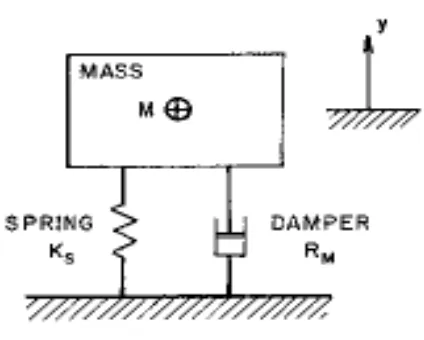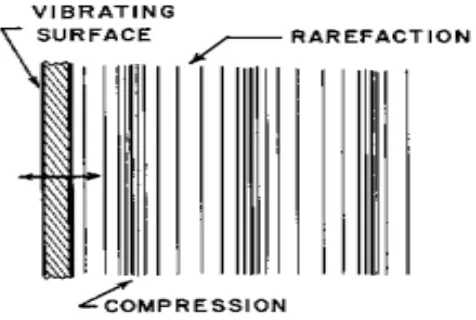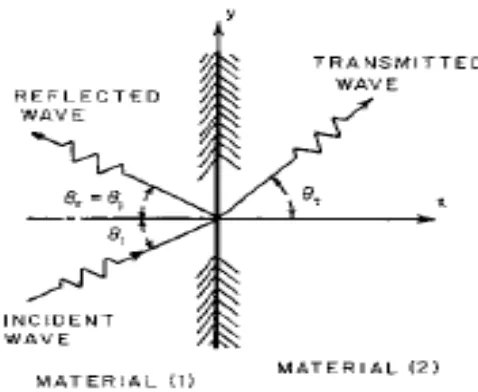UNIVERSITI TEKNIKAL MALAYSIA MELAKA
DEVELOPMENT OF BUILDING APPLICATION NOISE
BARRIER USING SANDWICH STRUCTURE
This report is submitted in accordance with the requirement of the Universiti Teknikal Malaysia Melaka (UTeM) for the Bachelor’s Degree of Mechanical
Engineering Technology (Maintenance Technology) with Honours
by
MUHAMAD RIDZUAN BIN MAT RADZI B071310834
920205-08-6445
UNIVERSITI TEKNIKAL MALAYSIA MELAKA
BORANG PENGESAHAN STATUS LAPORAN PROJEK SARJANA MUDA
TAJUK: Development of Building Application Noise Barrier Using Sandwich Structure
SESI PENGAJIAN: 2016/17 Semester 1
Saya MUHAMAD RIDZUAN BIN MAT RADZI
mengaku membenarkan Laporan PSM ini disimpan di Perpustakaan Universiti Teknikal Malaysia Melaka (UTeM) dengan syarat-syarat kegunaan seperti berikut:
1. Laporan PSM adalah hak milik Universiti Teknikal Malaysia Melaka dan penulis. 2. Perpustakaan Universiti Teknikal Malaysia Melaka dibenarkan membuat salinan
untuk tujuan pengajian sahaja dengan izin penulis.
3. Perpustakaan dibenarkan membuat salinan laporan PSM ini sebagai bahan pertukaran antara institusi pengajian tinggi.
4. **Sila tandakan ( )
SULIT
TERHAD
TIDAK TERHAD
(Mengandungi maklumat yang berdarjah keselamatan atau kepentingan Malaysia sebagaimana yang termaktub dalam AKTA RAHSIA RASMI 1972)
(Mengandungi maklumat TERHAD yang telah ditentukan oleh organisasi/badan di mana penyelidikan dijalankan)
Alamat Tetap:
No 3, Jalan Permai 2,
Desa Salak Permai,
43900 Sepang, Selangor.
Tarikh: ________________________
Disahkan oleh:
Cop Rasmi:
Tarikh: _______________________
DECLARATION
I hereby, declared this report entitled “Development of Building Application Noise Barrier Using Sandwich Structure” is the results of my own research except as cited
in references.
Signature : ………...
Author’s Name : MUHAMAD RIDZUAN BIN MAT RADZI
APPROVAL
This report is submitted to the Faculty of Engineering Technology of UTeM as a partial fulfillment of the requirements for the degree of Bachelor’s Degree in Mechanical Engineering Technology (Maintenance Technology) with Honors. The member of the supervisory is as follow:
i
ABSTRAK
Salah satu isu yang dihadapi oleh manusia setiap hari di seluruh dunia adalah
pencemaran bunyi. Pencemaran bunyi boleh dianggap sebagai bunyi yang tidak dingini
dan memberi kesan kepada manusia dari segi fizikal dan fisiologi. Kajian ini akan
merangkumi tentang cara untuk mengurangkan pencemaran bunyi dengan
pengubahsuaian yang dilakukan pada laluan penghantaran bunyi dengan menggunakan
penghadang pencemaran bunyi khusus untuk kegunaan bangunan. Oleh itu, kajian ini
bertujuan mencari alternatif yang mampan dan mesra alam sebagai penghadang
pencemaran bunyi dengan menggunakan sisa buangan tekstil dan gabus polyurethane
yang boleh mengurangkan bunyi. Melalui keputusan yang diperolehi daripada ujian,
bahan yang terbaik akan digunakan untuk pembuatan penghadang bunyi yang direka.
Tambahan lagi, pengukuran In-Situ (In-Situ Method) akan memeriksa kecekapan
halangan bunyi untuk mengurangkan pencemaran bunyi berdasarkan tahap tekanan
bunyi dikurangkan yang dihantar dari sumber bunyi kepada penerima. Hasil yang sangat
baik dimana kebisingan yang dihantar melalui penghadang pencemaran bunyi banyak
berkurang malah dengan drastik selepas kehilangan kadar tekanan bunyi yang
ii
ABSTRACT
iii
DEDICATION
iv
ACKNOWLEDGMENT
Assalamualaikum w.b.t
Very grateful to Allah S.W.T because of Allah S.W.T endowment, I can execute this Final Year Report at the right time. I would like to take this opportunity to express my deepest heartfelt and thank to all those who have guided and supported me during my Final Year Project either directly or indirectly.
First of all I would like to express Allah S.W.T. for this opportunity, and to my parents and siblings for their love and support. I would like to express my sincere gratitude to my supervisor, Mr. Ahmad Yusuf Bin Ismail andMr. Muhamad Azwar bin Azhari for preliminary ideas, invaluable guidance, continuous encouragement and unselfish support in making this research. Not forgotten to all lecturers with respect to their direction, guidance and assistance.
v
TABLE OF CONTENTS
Abstrak i
Abstract ii
Dedication iii
Acknowledgment iv
Table of Content v
List of Tables vii
List of Figures viii
List of Abbreviations, Symbol and Nomenclatures x
CHAPTER 1: INTRODUCTION 1
1.1 Vibration 1
1.2 Noise 2
1.2.1 Machinery Noise 3
1.2.2 Noise Acoustics 4
1.2.3 Noise Reduction Method 4
1.3 Sound Absorption 4
1.4 Sound Transmission Loss 6
1.5 Problem Statements 7
1.6 Objectives 8
1.7 Scopes 8
CHAPTER 2: LITERATURE REVIEW 9
2.1 Building Noise 9
2.2 Noise Reduction Method 12
2.2.1 Sound Absorption 14
2.2.2 Sound Transmission Loss 16
vi
2.3.1 Materials 20
2.3.2 Design 24
CHAPTER 3: METHODOLOGY 27
3.1 Research Design 27
3.2 Material Selection 30
3.2.1 Textile Waste 30
3.2.2 Polyurethane Foam 31
3.3 Conceptual Design 32
3.4 Measurement Procedure 35
3.4.1 In-Situ Measurement 35
CHAPTER 4: RESULT AND DISCUSSION 37
4.1 Result and Discussion 37
4.2 Sound Pressure Level of Noise Sources 38 4.2.1 Sound Pressure Level with Panel and Without Panel at 0° 48
4.2.2 Sound Pressure Level with Panel and Without Panel at 22.5° 49
4.2.3 Sound Pressure Level with Panel and Without Panel at 45° 40
4.2.4 Sound Pressure Level with Panel and Without Panel at 67.5° 41
4.2.5 Sound Pressure Level with Panel and Without Panel at 90° 42
4.3 Comparison Sound Pressure Level without Panel 43
4.4 Comparison Sound Pressure Level with Panel 44
4.5 Sound Transmission Loss 46
CHAPTER 5: CONCLUSION AND FUTURE WORKS 48
5.1 Conclusion 48
5.2 Future Works 49
vii
LIST OF TABLES
2.1 Sound absorption coefficient values of natural fibers as studied by Berardi & Iannace (2015).
23
4.1 The results of transmission loss of noise barrier with panel and without panel at 3100 Hz frequency.
46
viii
LIST OF FIGURES
1.1 Single degree of freedom with damping system (Barron,
2003) 1
1.2 Sound waves in material (Barron, 2003) 3
1.3 Sound absorption through a wall (Fallis, 2013) 5 1.4 Transmission loss in sound wave (Barron, 2003) 6 1.5 Illustration of noise pollution from BK37 to BK38, Factory 3,
Industrial Campus UTeM
7
2.1 Diagram shows wave propagation from piling source to building (Deckner, 2012)
10
2.2 Illustration of airtight structure installation for windows in Horizontal, Vertical, and Gap – Sealing Position (Ku and Kim, 2015)
13
2.3 Rooms with and without sound absorptive treatment (Egan, 1988)
14
2.4 Typical absorbing boundaries in room and absorption properties of a curtain (Bruel and Kjaer, 1986)
15
2.5 Schematic of test rooms used for transmission loss evaluations (Robin R. Wareing et al., 2015)
17
2.6 Room Dimension (Sousa and Gibbs, 2014) 18
2.7 Building greenery as acoustic insulation. Almeida Theatre. London (Perez et al., 2016)
19
2.8 Acoustic performance using Sonic Crystal scatterers (Castiñeira-Ibañez et al., 2015)
20
2.9 Classification of sound absorbing materials (Sikora and Turkiewic, 2007)
22
ix 2.11 Schematic of the low – height barrier prototype (Jolibois et
al., 2015)
25
2.12 Image of different types of corrugated board, from left to right: single, double and triple wave corrugated board patented by (Thompson, 1875)
26
3.1 3.2
Flow chart of the research
Textile waste as absorption material (Gabor, 2016)
28 30
3.3 Polyurethane Foam (Tiuc et al., 2016) 31
3.4 Conceptual design of noise barrier 32
3.5 Sort of different material for sound absorption material arrangement
33
3.6 Different thickness of absorption materials 34
3.7 Image of speaker placed in front of noise barrier 35
4.1 Sound Pressure Level with Panel and Without Panel at 0° 38 4.2 Sound Pressure Level with Panel and Without Panel at 22.5° 39 4.3 Sound Pressure Level with Panel and Without Panel at 45° 40 4.4 Sound Pressure Level with Panel and Without Panel at 67.5° 41 4.5 Sound Pressure Level with Panel and Without Panel at 90° 42 4.6 Comparison of Sound Pressure Level without Panel at 0°,
22.5°, 45°, 67.5° and 90° 43
4.7 Comparison of Sound Pressure Level with Panel at 0°, 22.5°,
x
LIST OF ABBREVIATIONS, SYMBOL AND
NOMENCLATURES
A - Absorption Value after Treatment with
Sound-absorbtive Materials
A0 - Absorption Value Before Treatment with Sound-absorptive Materials
BK - Bilik Kuliah (Lecture Class)
d - Distance
dB - decibels
FTK - Fakulti Teknologi Kejuruteraan
Hz - Hertz
h - Height
Ks - Spring Constant
Kg/m³ - Kilogram per meter cube
LPF - Light Poly-urethane foam
M - Mass
m - Meter
NR - Noise Reduction
NRC - Noise Reduction Coefficient
RM - Damper Constant
Rw - Rating of Sound Insulation Performance
SPL - Sound Pressure Level
S - Surface Area
TL - Transmission Loss
t - Thickness
UTeM - Universiti Teknikal Malaysia Melaka
xi
w - Width
𝛼 - Absorption Coefficient
α
w - Rating of Sound Absorption Coefficientδ - Density
μm - Micro Meter
% - Percent
Ø - Diameter
ϴi
-
Incident Wave AngleϴR - Reflected Wave Angle
1
CHAPTER 1
INTRODUCTION
1.1 Vibration
[image:16.612.221.433.466.636.2]Vibration occurs when something oscillates about a static position. The altering transfer of energy between its potential and kinetic forms involves in the vibration of a system. Besides that, vibration is also being known as the physical movement or motion of a rotating machine. A study by Taylor (2003), he state that since the vibration cannot be measured by sight or touch, employed should change the vibration into a usable product that can be measured or analyzed (Taylor, 2003). In our daily life routine, people were always exposed to the vibration which enviable or non-enviable. For example the reed in a woodwind instrument or harmonica, noise vibration from vehicles on the streets and mostly vibration comes from industrials.
2 By referring to the figure above, in order to reducing the noise level, damping materials are used to dissipate the mechanical energy from being radiated into noise that transmitted into the air (Barron, 2003). According by Taylor (2003), he state that vibration can be divided into three types which are harmonic motion, periodic motion and random motion. Harmonic motion is the simplest periodic motion that shows displacement as a harmonic function of angular velocity and time. It is periodic, meaning it repeats at some point in time.
Vibration can also be seen as a periodic motion that moving repeatedly after a certain interval time. Random motion occurs in an erratic manner and contains all frequencies in a particular frequency band. It is a motion that not repeatable (Taylor, 2003).
Besides that’s, vibration also will contribute to the deterioration of working environment. Workers exposed to occupational vibration are also often exposed to excessive noise. Worker will get hearing problem especially in cochlea. Cochlea will damage when exposed to excessive noise and worker become deaf (Futatsuka et al., 1991).
1.2 Noise
3 Figure 1.2: Sound waves in material (Barron, 2003).
Noise also can be defined as any perceived sound that is objectionable or damaging for a human. Noise is somewhat subjective, because one person’s ‘‘music’’ may be another person’s ‘‘noise.’’ Some sounds that could be classified as noise, such as the warning whistle on a train, are actually beneficial by warning people of potential dangerous situations (Barron, 2003). The sound wave in various materials is given in Figure 1.2.
1.2.1 Machinery Noise
4 1.2.2 Building Acoustics
It’s a noisy world. Twenty-four hours a day, seven days a week, we are exposed to sounds we do not want, need, or benefit from. When the surrounding noise level is same as speech level, the intelligibility rates would be decrease to 95% due to redundancy of speech that lead to unpleasant conversation because of sound interference (Lazarus, 1986, 1987). The study of sound propagation is not only focusing only at acoustical design of large performance halls but it is also concern about acoustical comfort surroundings where people spend lot of times either in the workplace, homes, hotels and restaurants (Bennet, 1975).
1.2.3 Noise Reduction Method
It is compulsory to eliminate or at least reduce the source of noise in order to protect humans from continually exposed to the noise. Manipulating the source of the noise or by modifying the receiver of the sound can secured the sound easily. (Barron, 2003). Occupational Safety and Health Administration (OSHA) sets the admissible noise exposure limit in the room 85 dB for an eight hour period. In order to create an acoustically pleasing environment for the human, noise control and its principles play a very important role to bring down the intensity of sound to a safer level for human ears.
1.3 Sound Absorption
5 Figure 1.3: Sound absorption through a wall (Fallis, 2013).
6 1.4 Sound Transmission Loss
Figure 1.4: Transmission loss in sound wave (Barron, 2003).
7 1.5 Problem Statement
[image:22.612.129.526.418.642.2]Human especially students need to focused when studying. Persistent expose to noise can give negative effect to the student such as disturbance noise from another class. Now, this situation has been face by students and lecturer in FTK, UTeM Industrial Campus. They have feeling annoying due to noise interference from another class while learning section is being conducted. A study by Zaheerudin (2008), normal acceptable distance for good interaction in ambient environment should be not more than 65 dB for young and teenagers while 55 dB for old people. The students are having resistance on their focusing on learning process due to noise interference from another class. Interaction between people in speech is ascendant method, noise interference significantly effect on the communication (Zaheerudin, 2008). Noise barrier control the unwanted noise by reducing direct contact of sound pressure to human. There are two types of method to reduce noise which are sound absorption and sound time loss or reflection of sound. Materials that have tendency to reduce noise in large scale become priority for development of noise barrier.
8 Figure 1.5 shows noise pollution disturb the lectures session are being conducted between these two classes at the same time. The students and lecturers in FTK, UTeM Industrial Campus having experienced on feeling annoyance due to noise interference while the learning session are being conducted. Voice coming out from human voice projection in BK38 possibly leaks into BK37 at some of times during lectures session that being conducted surely will bring an annoyance condition to the students and the lecturer that affected by the noise pollution.
1.6 Objectives
The objectives of the project are:
To develop noise barrier for building application using sandwich structure design. To test the effects of noise barrier in the class by using In-situ measurement
method with different angles.
1.7 Scopes
The scopes of the project are:
Developing noise barrier using sandwich structure as the design of the barrier. Testing noise barrier based on sound transmission loss and sound absorption rate
9
CHAPTER 2
LITERATURE REVIEW
2.1 Building Noise




